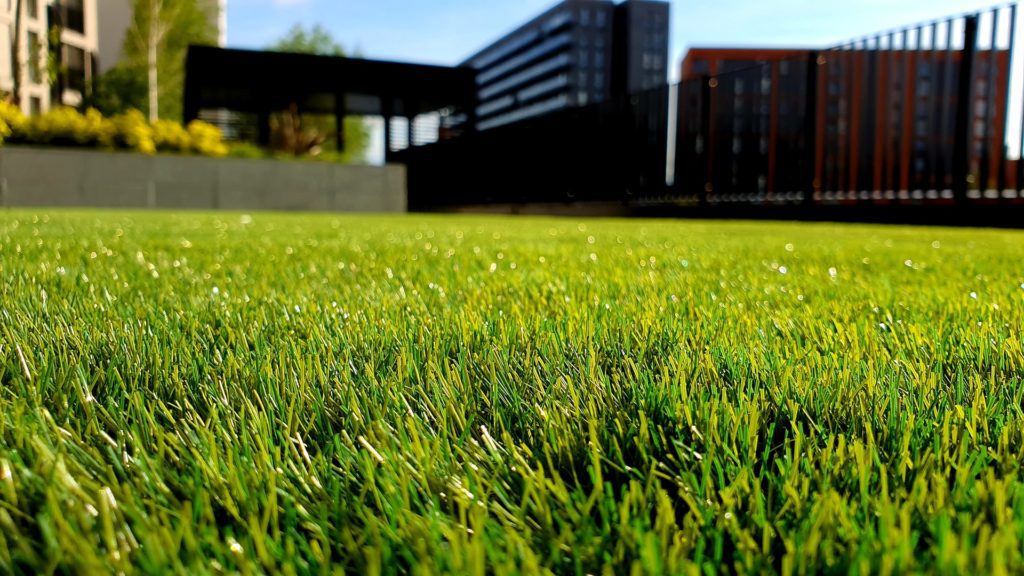6 Lawn Care Mistakes That Can Absolutely Wreck Your Garden

Collectively, we’re rather obsessed with lawns. We want to create perfectly green patches of grass for our properties to make us feel like we are winning at life.
But getting lawns right is a bit of a dark art. In fact, hardly anyone actually knows how to manage their lawns properly. It’s not enough to just sprinkle a bit of water on them now and again. You need to follow the proper process.
Unfortunately, many homeowners are making mistakes – and it’s totally wrecking their gardens. Their lawns are full of weeds, parched and scalped. It’s not good.
In this post, we take a look at some of the most common mistakes people are making and how you can avoid them.
Mistake 1: Thinking Mushrooms Are Bad

When mushrooms start popping up all over your lawn in the fall, your first instinct is to rip them out and protect the rest of your lawn. But this approach might be a little premature. It turns out that not all mushrooms are bad. In fact, they can, over the long-run, improve the health of your lawn.
Why? It all comes down to why they are there in the first place. If you have fungi sprouting up across your lawn, it usually means that there is a source of food for them under the surface, such as a rotting log. Mushrooms feed on this material and then slowly, over time, return it to soil. In the long-run, the fungi will disappear and your lawn will have better quality soil from which to sprout.
Mistake 2: Watering Too Often
Watering grass too often creates problems. If you set up a sprinkler for daily watering, it encourages grass to become lazy and develop shallow root systems. Over time, you find yourself in a position where you have to water the grass every day to stop it from drying out. The lawn’s roots simply don’t penetrate the soil deeply enough.
The solution is pretty simple: don’t water every day. Force the grass to grow longer roots to search for water sources under the soil.
Mistake 3: Mowing At Noon

Getting outside and mowing the lawn in the middle of the day isn’t just bad for your skin; it’s also bad for the grass.
But why is this? It comes back to grass’s natural defenses. Blades of grass build protection against the sun into their structures so that they can survive the intense midday heat. However, if you cut the grass at this time, you effectively destroy its defenses, leaving it exposed. As a result, the sun can do more damage to it, which may cause it to turn brown for longer than you would like.
If you can, cut the grass in the evening. This gives it the maximum amount of time possible to recover before noon the following day.
Mistake 4: Using Pesticides
Many homeowners use pesticides and herbicides on their lawns to keep them looking healthy. However, these compounds can damage the grass’s ecosystem over time. By killing insects, the grass becomes less robust and, over time, far more difficult to sustain.
If you are struggling to get your grass to grow, contact a grass fertilization company. Using fertilizer to selectively encourage the growth of grass tends to be the most effective way to get a sustainable lawn.
Mistake 5: Mowing With A Blunt Blade
Mowing with a blunt blade can cause tremendous damage to your lawn. When blades are dull, they tend to tug on grass instead of cutting straight through it. This disrupts the natural structure of the grass.
Dull blades also create another issue: they can cause nutrient deficiencies. Dull blades damage more cells, leading white, nutrient-rich tissue to leech out of the grass once cut. If you notice that the grass is oozing in this way, you may need to replace the blade on your mower.
Mistake 6: Cutting Wet Grass
When grass is dry, individual blades stand tall and proud. However, when it is wet, they tend to bow over, making them more difficult to cut. Thus, if you try to mow wet grass, you’ll find that it doesn’t cut straight. Instead, you find that it clumps in patches, making your lawn uneven.
Cutting in wet weather can create other issues too. High moisture content makes blades of grass more susceptible to infection compared to dry conditions.
Before mowing your lawn, always leave it a day or so since the last rainstorm. Never mow a waterlogged lawn. Instead, always deal with the water issue first.





Comments